Featuring my grade two pupils' art works, Paper Mache, a French for “chewed-up paper,” It is a technique for creating three-dimensional objects, such as sculpture, from pulped or pasted paper and binders such as glue or plaster.
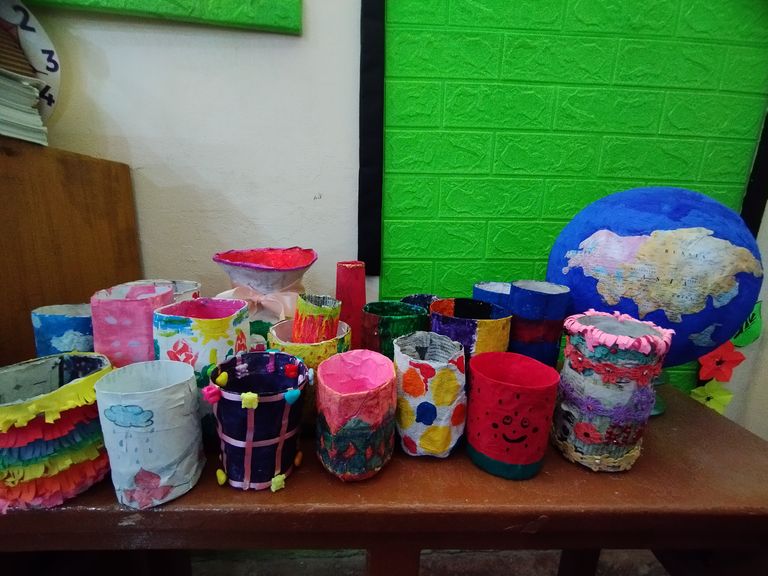
Papier mâché’ is a term used to describe lots of objects made in slightly different ways, but all using mashed up paper and some sort of paste. Sometimes, the paper would be moulded around a solid form, for example a wooden board. Other times, the paper would be pressed into a cast to mould it into the desired shape.
Paper mache is one way of recycling waste materials like old news papers and magazine or other paper products. You only need strips of papers, paste or glue and things you like to form such as old toys, cabs, bottles or even balloon.
Making this is quite easy in which children of young age can easily perform. Here are the steps on how to make a simple paper mache.
- Prepare the materials (strips of paper, object you want to form, paste or glue, paint and paint brush for the design.
- Dip one piece of newspaper at a time into the paper mache paste. Squeeze off excess paste.
- Stick the newspaper strip over your form and smooth it down with your fingers. Completely cover your form with a layer of the saturated newspaper strips.
- When the desired thickness already achieved, let it dry.
- When dried up, you can paint the design you want or you may put beads, buttons or any reusable materials as decorations.
- When it's already decorated, you may display your work.
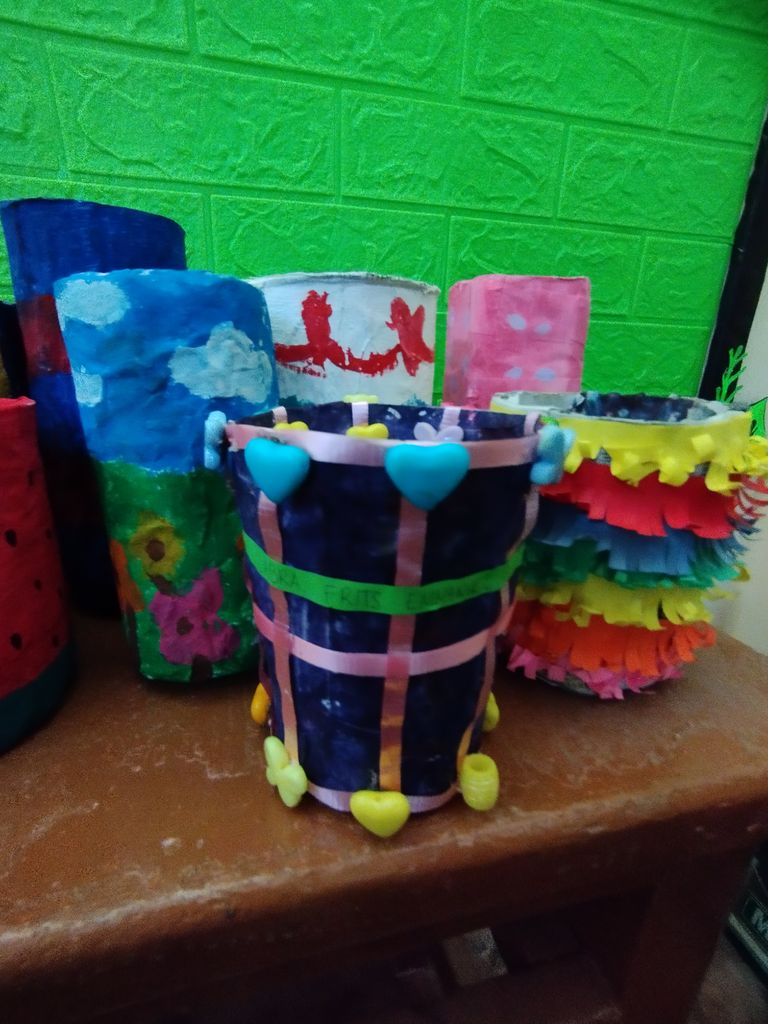
This artwork catches my attention. He used a balloon. He formed it like a globe and use CDs as its stand. His art work is very much useful because we can use it in our lessons in some other subjects. Not only minimizing the garbage but it's also educational.
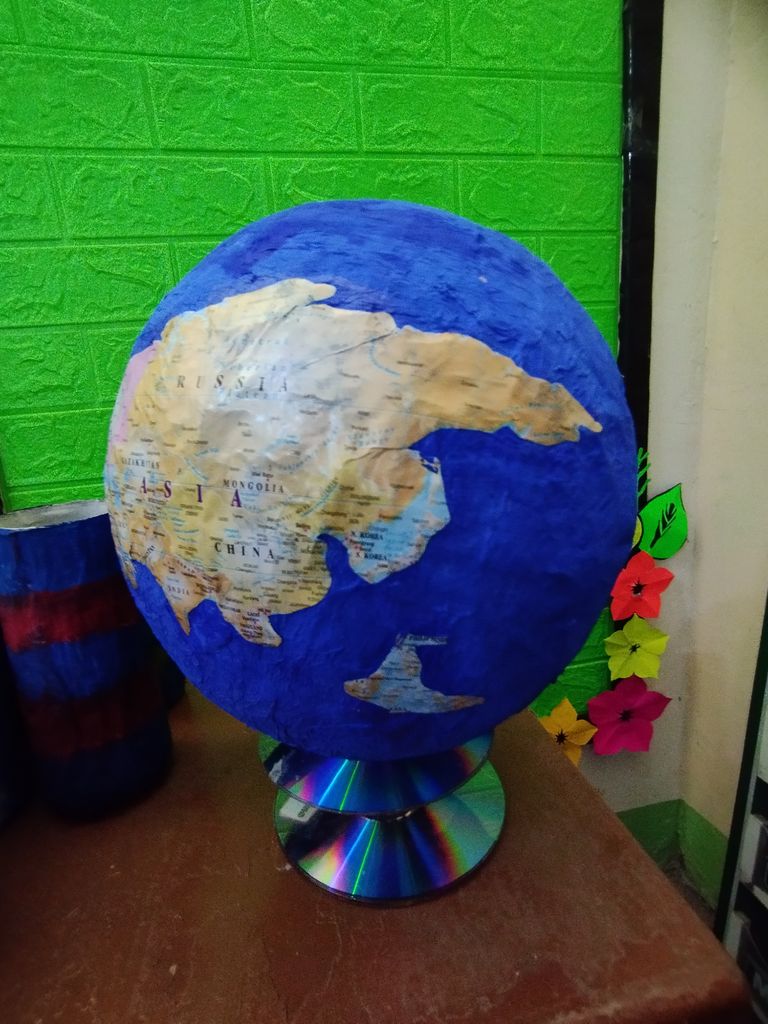
One of my pupils also formed a flower vase. This can be used as decoration or you may put some flowers in it.
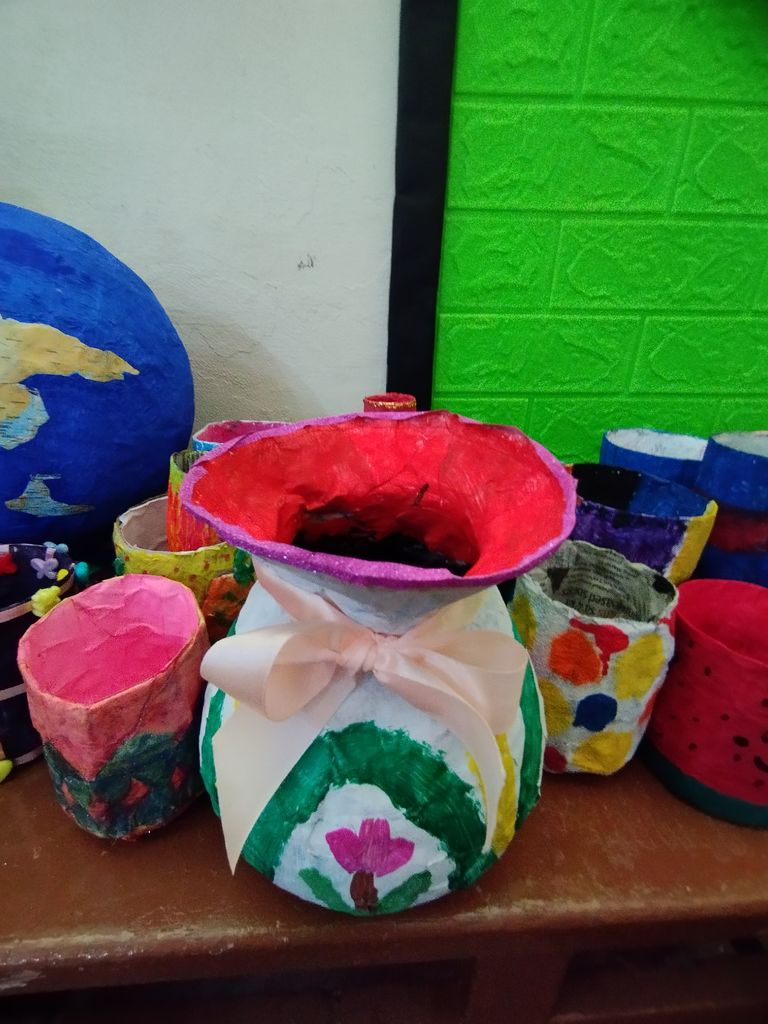
Most of them make a pencil holder because it's quite easy to make and simple.
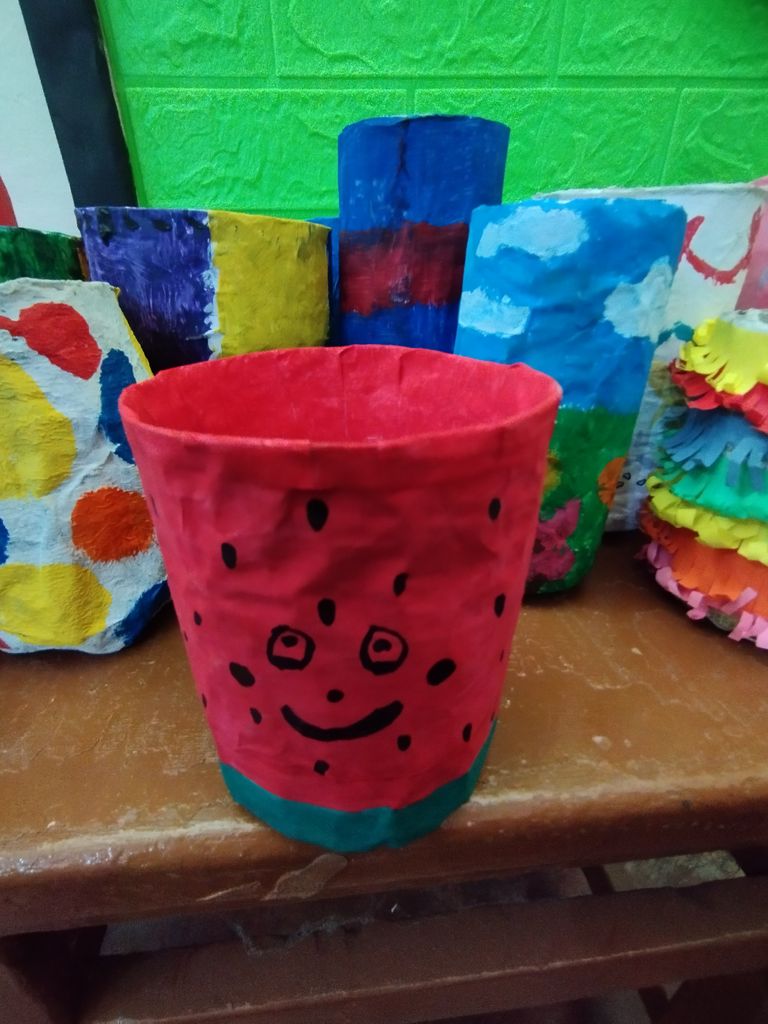
Purpose of this creative sculpture using recycled materials : encourages imagination and creativity, problem solving in construction, good for fine motor skills and also has a sensory component in the gluing process.